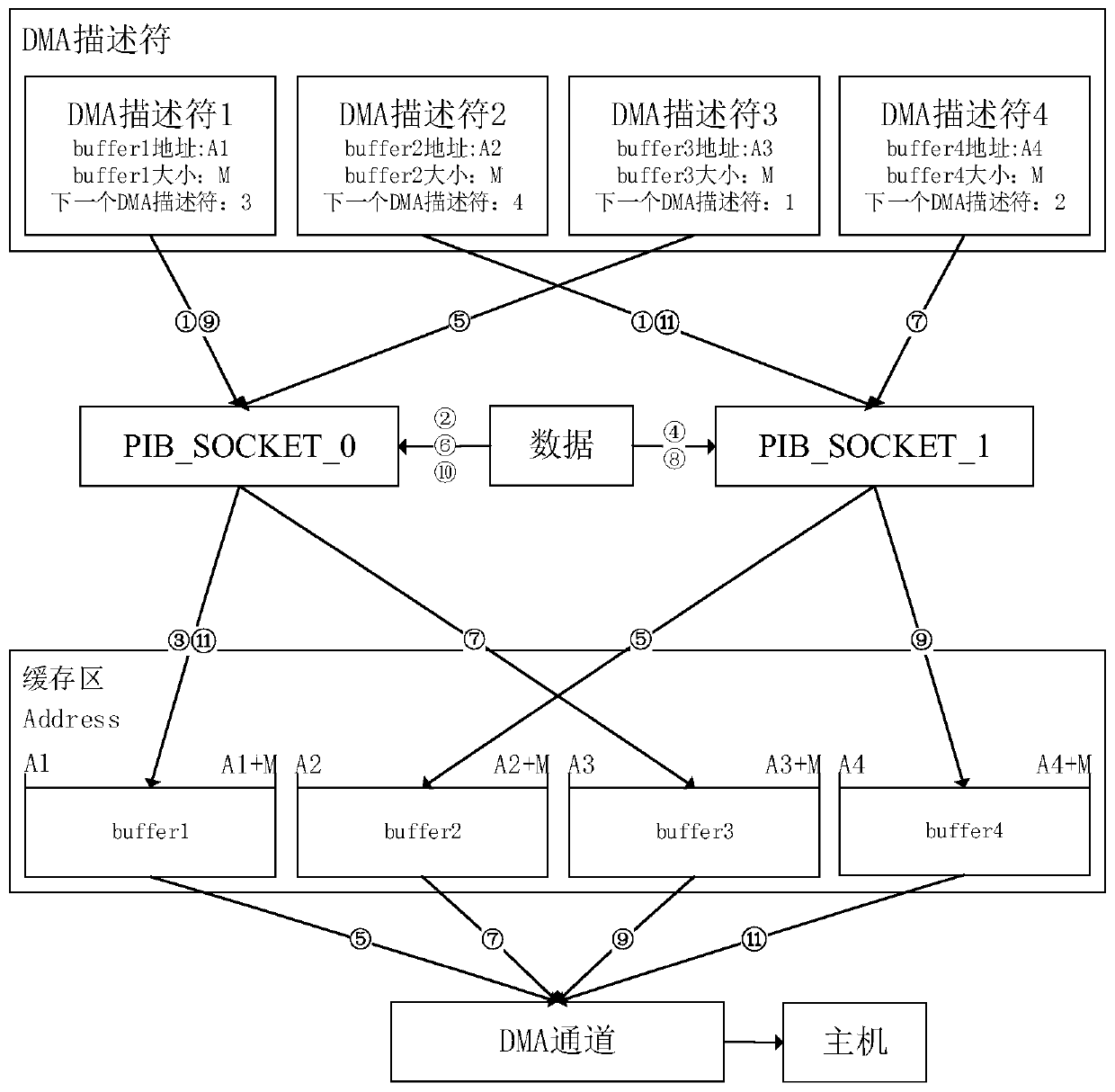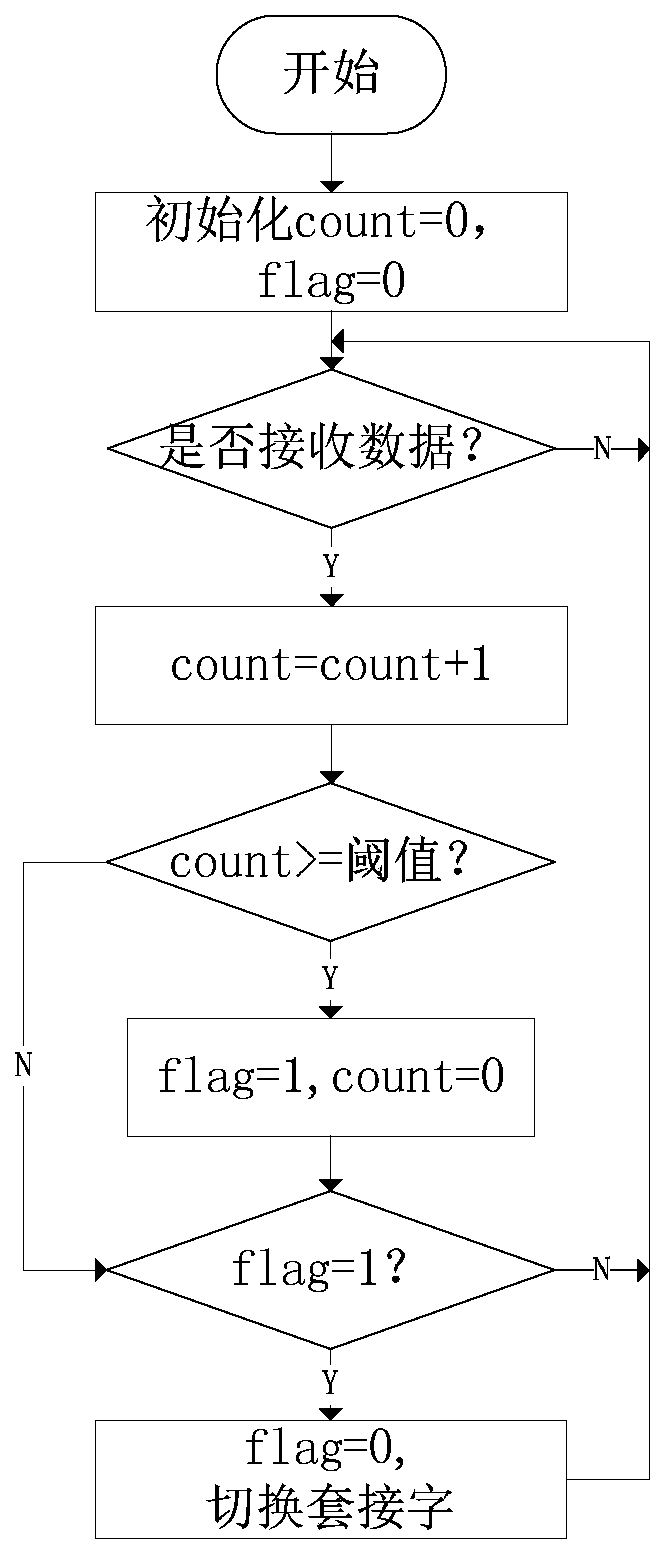Real-time high-speed data transmission method and system based on USB3.0 auxiliary protocol
A high-speed data transmission and data technology, applied in electrical digital data processing, instruments, etc., can solve the problems of limited camera technology application, huge delay in batch data transmission, data loss, etc., to eliminate the cooling of buffer switching time and shorten batch data. Transmission delay, effect of increasing transmission rate
- Summary
- Abstract
- Description
- Claims
- Application Information
AI Technical Summary
Problems solved by technology
Method used
Image
Examples
Embodiment 1
[0047] Such as figure 1 As shown, Embodiment 1 of the present invention proposes a kind of real-time high-speed data transmission method based on USB 3.0 auxiliary protocol, comprising the following steps:
[0048] Step 1) Connect the GPIF II interface of the USB 3.0 controller correctly according to the needs of use, including data transmission lines (DQ0-DQ31), control signal lines (CLK, SLOE, SLCS, SLWR, SLRD), and buffer empty and full flag lines (FLAGB) etc.; the interfaces involved can be adjusted according to actual needs.
[0049] Connect the GPIF II interface of the USB 3.0 controller to the host controller as required, including data lines, control signal lines, and cache empty and full flag lines.
[0050] Step 2) Load DMA descriptor 1 to PIB_SOCKET_0, DMA descriptor 2 to PIB_SOCKET_1, and specify PIB_SOCKET_0 as the current port, as shown in the sequence number ①, wait for the setting of the data valid symbol; that is, buffer1 and buffer2 are simultaneously loaded...
Embodiment 2
[0059] When the quantity of buffer zone is expanded to N, embodiment 2 of the present invention proposes a kind of real-time high-speed data transmission method based on USB 3.0 auxiliary protocol, comprises the following steps:
[0060] receive external data;
[0061] Judging whether the full flag flag is set, if it is set, the data in the current buffer area is sent to the host through the DMA channel, and then the two socket ports are switched, and the loaded next buffer area is used as the current buffer area; and Load the next DMA descriptor to a non-current socket port, reset the full flag flag, otherwise, store the received data into the current buffer through the current socket port, and the buffer is a circular structure; include:
[0062] Step 1) Load DMA descriptor 1 to PIB_SOCKET_0, DMA descriptor 2 to PIB_SOCKET_1 respectively, and specify PIB_SOCKET_0 as the current port;
[0063] Step 2) Store the received external data into the current buffer buffer through t...
Embodiment 3
[0069] Embodiment 3 of the present invention proposes a real-time high-speed data transmission system based on the USB 3.0 auxiliary protocol, including: a data receiving module, a data transmission module and a DMA channel;
[0070] A data receiving module, configured to receive external data;
[0071] The data transmission module is used to determine whether the full flag flag is set. If it is set, the data in the current buffer area is sent to the host through the DMA channel, and then the two socket ports are switched to transfer the loaded next buffer area. As the current buffer area; and the next next DMA descriptor is loaded to a non-current socket port, and the full flag flag is reset, otherwise, the received data is stored in the current buffer area through the current socket port; the cache The area is a cyclic structure.
[0072] The two socket ports are respectively: PIB_SOCKET_0, PIB_SOCKET_1, and the buffer areas are respectively: buffer1, buffer2, ... bufferN c...
PUM
 Login to View More
Login to View More Abstract
Description
Claims
Application Information
 Login to View More
Login to View More - R&D
- Intellectual Property
- Life Sciences
- Materials
- Tech Scout
- Unparalleled Data Quality
- Higher Quality Content
- 60% Fewer Hallucinations
Browse by: Latest US Patents, China's latest patents, Technical Efficacy Thesaurus, Application Domain, Technology Topic, Popular Technical Reports.
© 2025 PatSnap. All rights reserved.Legal|Privacy policy|Modern Slavery Act Transparency Statement|Sitemap|About US| Contact US: help@patsnap.com



